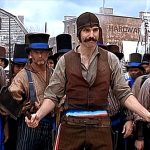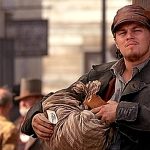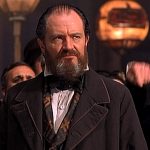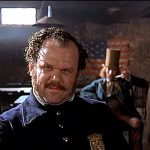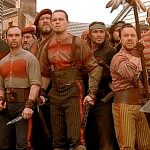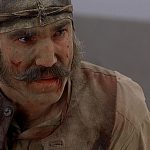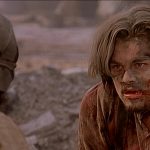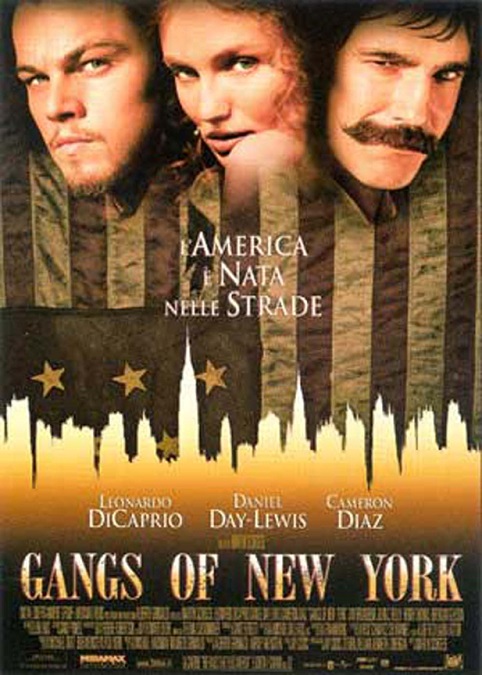
Gangs of New York – 2002
This was a good movie that I enjoyed watching. There were some wonderful performances by Daniel Day-Lewis and Leonardo DiCaprio. Even Cameron Diaz had her moments, by which, I’ll admit, I’m a little surprised. I’ve never considered her to be that good an actress, but she did just fine. Other notable actors like Jim Broadbent, John C. Reilly, Henry Thomas, Brendan Gleeson, Stephen Graham and even Liam Neeson in a smaller role, all did a great job.
The movie is a fictional story that took place around historical events, namely the New York Draft Riots of 1863. Most of the film, from what I have read, remained pretty true to history, especially with the visuals like the costumes and sets. Also, the dialects used by the actors were as accurate as director Martin Scorsese could make them. However, because the central story was fictional, certain events were rearranged to fit it. For example, according to Wikipedia, in the movie, Chinese Americans were fairly common, though significant Chinese immigration didn’t begin until 1869, and the prominently featured Chinese theatre wasn’t built until the 1890s. Also, another building that was used was The Old Brewery, which had actually been demolished in 1852. Minor things, in my book.
The film’s protagonist, played by DiCaprio, is Amsterdam, a young thief, apparently new to New York City. But secretly, he is the long lost son of Priest Vallon, played by Neeson, who was killed during a previous gang war for control of the slum neighborhood of Five Points in Manhattan. His murderer was Bill “The Butcher” Cutting, played by Day-Lewis. Now, after spending his childhood years in an orphanage, Amsterdam is back for revenge.
Other characters like Happy Jack Mulraney, played by Reilly, Johnny Sirocco, played by Thomas, and McGloin, played by Gary Lewis, men who had fought along-side Priest Vallon but survived, are now in the employ, in one way or another, of The Butcher. He is a hard and evil man who rules the Five Points with an iron fist, using violence and fear to control his territory.
Amsterdam’s plan is to murder the Butcher publicly on the anniversary of his father’s death. To do this, he works his way into The Butcher’s inner circle and becomes a trusted friend, even going so far as to save his life from an assassination attempt. Along the way, he meets and falls in love with a beautiful pick-pocket who was once the Butcher’s ward and mistress, Jenny Everdeane, played by Diaz. But her role was almost superfluous to the main plot. Sometimes there seemed little reason for her to be there at all.
As I said, the visuals were spot-on and very well depicted. The costumes were especially notable for their authenticity. This was the slums, the seedy underbelly of Manhattan in the 1860s. Everything was dirty and grimy. Sanitation was substandard, and cleanliness was never a priority. And I can only imagine how it must have smelled. I noticed that DiCaprio’s hair always looked unwashed and grimy.
If the movie had any failings, I would say that it was sometimes hard to follow. Sometimes, especially in the beginning of the film, Scorsese spent very little time explaining who the characters were. Some scene changes were a little abrupt and jarring. And near the end, when the big Draft Riot scene began, I didn’t understand some of what was going on. I didn’t actually know about the Draft Riots and was confused why the union soldiers were mowing down random mobs in the streets. Also, it was happening at the same time as the gang war and they kept switching back and forth between the gang war and the riot, making things very confusing.
And then there was the music. Most of it was just fine. But the story took place in the 1860s. It was a little jarring when, during the transitional scene between the young Amsterdam being dragged off to the orphanage, and the adult character first walking onto the screen, the music turned to a funky rock number, complete with a modern drum beat and electric guitars. It didn’t fit the time period and took me out of the moment. It also came back at the end of the movie where it shows how the Butcher was buried next to Priest Vallon, and the surviving Amsterdam tells of how the two men have been all but forgotten by history. But then the music makes a little sense as we see New York evolve into the modern era, as the two headstones crumble, and are covered in grass.
The movie was nominated for 10 Academy Awards, but didn’t win any. The only actor in the film to be nominated for an Oscar was Daniel Day-Lewis. I thought his performance was very good, but as has become typical for him, it was a little over the top. Fortunately, that very animated and intense style of acting lent itself very well to both the character and the action. DiCaprio is always good in whatever role he plays. All in all, the movie was fairly well made, but it lost the top prize to Chicago.
